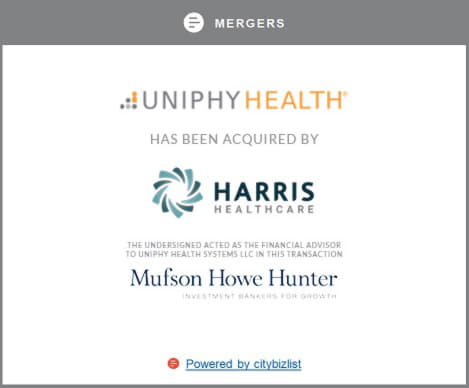BASKING RIDGE, N.J., Aug. 13, 2020 (GLOBE NEWSWIRE) -- Caladrius Biosciences, Inc. (Nasdaq: CLBS), a clinical-stage biopharmaceutical company dedicated to the development of cellular therapies designed to reverse, not manage, disease, provides a corporate update and reports financial results for the three and six months ended June 30, 2020.
Product Development and Financing Highlights
CLBS119 clinical trial targeting the repair of COVID-19 induced lung damage to be initiated in 3Q 2020
Caladrius is committed to helping patients and communities combat the public health crisis of COVID-19 by leveraging its proprietary CD34+ cell technology to potentially repair COVID-19 induced lung damage. Experience to date indicates that a large portion of COVID-19 survivors who required ventilatory support will suffer long-term, debilitating lung damage.1 Scientists learned in the aftermath of the first SARS epidemic that the coronavirus targets cells that express CD34.2 Depletion of that cell population generally is thought to be connected to the lung’s inability to repair itself.2 Early reports from the COVID-19 pandemic indicate that the endothelial cells that line the microvasculature of the lung are targeted by the virus and that the destruction of the lung microcirculation may be a critical factor in the inability of the lung to repair itself even after the virus has been eliminated.3 Clinical trials and preclinical models have shown that CD34+ cells act in a restorative and regenerative capacity in multiple organs, including models of severe lung inflammation.4 Research has also shown that a deficiency in vascular CD34+ cells can result in a predisposition to injury in the lungs.5 Based on this accumulated evidence, Caladrius is excited to launch the pilot study of CLBS119 to evaluate its autologous CD34+ cell therapy for the repair of COVID-19 induced lung damage in patients who have suffered respiratory failure. The trial is planned to initiate by late August with the first patient expected to be treated in September.
CLBS12 development in Japan continues to yield promising results
The Company’s open-label, registration-eligible study in Japan of CLBS12, its SAKIGAKE-designated product candidate for the treatment of critical limb ischemia (“CLI”), a disease with no currently available approved therapy6 and a higher mortality rate than all cancers except that of lung cancer,7 has shown positive results to date. The Buerger’s Disease cohort has concluded with 4 out of 7 (57%) patients achieving a positive outcome, an outstandingly positive result for these patients who normally see continued progression leading to amputation. Despite the global impact of COVID-19, which has caused the deceleration of clinical trial enrollment globally, the Company remains encouraged by the patient pre-screening pipeline that has been identified and targets to complete trial enrollment by the end of 2020 and report top line data for the full study in late 2021 or early 2022. Based on the data from the concluded Buerger’s Disease cohort and the data to date in the no-option CLI cohort, the Company maintains its expectation of the study’s ultimate success.
CLBS16 to be studied in Phase 2b trial for the treatment of coronary microvascular dysfunction
Caladrius recently completed and announced the results of its ESCaPE-CMD Phase 2 study of CLBS16 for the treatment of coronary microvascular dysfunction (“CMD”), a disease that continues to be underdiagnosed and potentially afflicts millions annually - a vast majority of whom are female - with no current treatment options. Data from the Phase 2 trial showed highly statistically significant improvement in coronary flow reserve correlating with symptom relief for patients with CMD after a single intracoronary injection of CLBS16. The Company is committed to raising awareness of this growing women’s health crisis as it initiates a rigorous Phase 2b clinical trial of CLBS16 with the first patient expected to be enrolled by late 2020. The double-blind, randomized, placebo-controlled trial will evaluate the efficacy and safety of delivering autologous CD34+ cells (CLBS16) in subjects with coronary microvascular dysfunction and without obstructive coronary artery disease.
CLBS14 remains poised to enter a single confirmatory phase 3 clinical trial
The Company’s Phase 3 protocol for its RMAT-designated product candidate, CLBS14, for the treatment of no-option refractory angina (“NORDA”) remains ready to initiate pending sufficient funding to run the program to completion. Based on an abundance of very strong data from previous Phase 1, 2, and 3 studies, Caladrius remains confident in the potential for clinical success once the program is executed.
Caladrius secures almost $30 million in new capital year-to-date and extends cash runway through the end of 2021
In April 2020, Caladrius generated $10.9 million in non-dilutive funding through the sale of a portion of its qualified New Jersey net operating losses. Throughout the remainder of the second quarter, the Company executed two registered direct offerings priced at the market under Nasdaq rules raising an additional aggregate $9.3 million. In July 2020, Caladrius raised $2.0 million in a private placement priced at the market under Nasdaq rules. In addition, Caladrius opportunistically raised $8.3 million through its Common Stock At-the-Market Sales Agreement with H.C. Wainwright & Co. year-to-date.
“Despite COVID-19’s unprecedented global impact, we continue to deliver on a number of key initiatives that we believe position the Company for success in the quarters ahead,” stated David J. Mazzo, Ph.D., President and Chief Executive Officer of Caladrius. “To date in 2020, we successfully raised enough capital to extend our cash runway through the end of 2021, continued activities in support of our existing and newly initiated clinical programs and strengthened our Board with the previously announced addition of Dr. Michael Davidson.”
“We are excited about what lies ahead through the balance of 2020 and into 2021 with a number of key milestones expected, including the commencement of our pilot study of CLBS119 in COVID-19 induced lung damage, the completion of enrollment in our Phase 2 study of CLBS12 for critical limb ischemia and the initiation of our Phase 2b study of CLBS16 in coronary microvascular dysfunction,” concluded Dr. Mazzo.
Second Quarter 2020 Financial Highlights
Research and development expenses for the second quarter of 2020 were $1.8 million, a 39% decrease compared with $3.0 million for the second quarter of 2019. Research and development in both periods focused on the advancement of our ischemic repair platform. More specifically, R&D expense comprised (i) costs associated with investigational new drug application and planning for commencement of a pilot study of CLBS119, (ii) execution expenses for our ongoing registration-eligible study for CLBS12 in critical limb ischemia in Japan, and (iii) expenses for both the completion of our ESCaPE-CMD clinical study for CLBS16 in coronary microvascular dysfunction and planning for the follow on Phase 2b study.
General and administrative expenses for the second quarter of 2020 were $2.5 million, compared with $2.4 million for the second quarter of 2019.
Overall, net income was $6.6 million for the second quarter of 2020, which included a $10.9 million income tax benefit from the sale of qualified New Jersey net operating losses, compared to a net loss of $5.1 million for the second quarter of 2019.
Balance Sheet Highlights
As of June 30, 2020, Caladrius had cash, cash equivalents and marketable securities of $34.9 million. Based on existing programs and projections, the Company remains confident that its current cash balances will fund its operations through 2021.
About Caladrius Biosciences
Caladrius Biosciences, Inc. is a clinical-stage biopharmaceutical company dedicated to the development of cellular therapies designed to reverse, not manage, disease. We are developing a first- in-class cell therapy product that is based on the notion that our body contains finely tuned mechanisms for self-repair. Our technology leverages and enables these mechanisms in the form of specific cells, using formulations and modes of delivery unique to each medical indication.









